The Paleolithic era, or the Old Stone Age, began about 2.5 million years ago and ended about 10,000 years ago. The end of the Paleolithic Era, which lasted from about 40,000 to about 10,000 years ago, is known as the Upper Paleolithic period. During the Upper Paleolithic period, human beings began to create works of art such as cave paintings, petroglyphs (rock carvings) and statues.
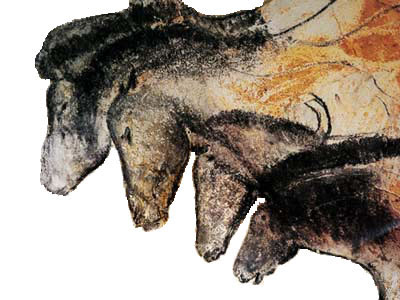
Cave Paintings
The earliest cave paintings were created about 30,000 years ago.
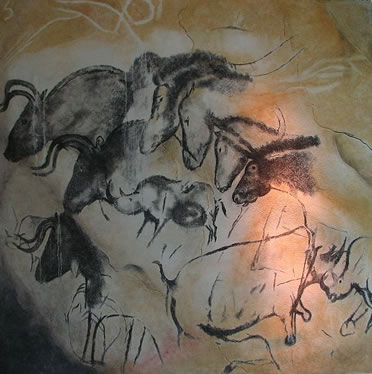 Most of the images in cave paintings are of large animals. However, there are some half-human, half-animal creatures. There are also handprints.
Most of the images in cave paintings are of large animals. However, there are some half-human, half-animal creatures. There are also handprints.
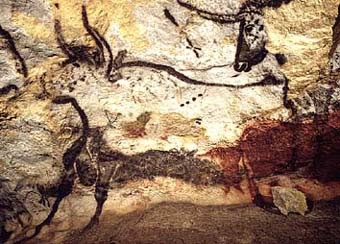 Some of the animals depicted in cave paintings still exist today. These include bison, horses and reindeer in European caves, and elephants and giraffes in caves south of Africa's Sahara Desert.
Some of the animals depicted in cave paintings still exist today. These include bison, horses and reindeer in European caves, and elephants and giraffes in caves south of Africa's Sahara Desert.
Cave paintings also depict animals that are now extinct, such as mammoths, saber-toothed tigers, cave bears and cave lions.
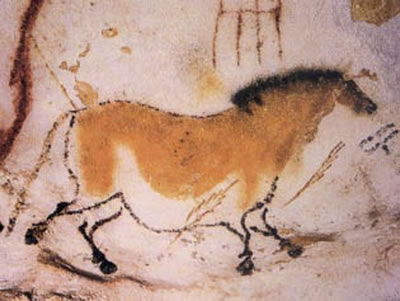
Early cave painters used pigments made out of charcoal, hematite, manganese oxide and red and yellow ochre. These minerals were moistened with animal fat. Paint was then applied to cave walls with fingers, brushes made of animal fur or spatulas made of bone.
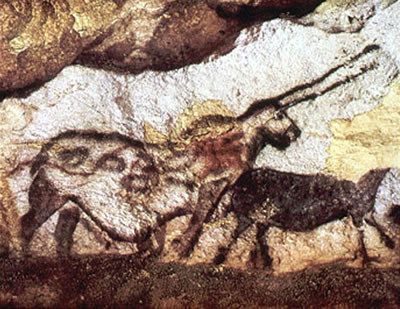 Cave paintings have been found on continents all over the Earth. Hundreds of caves with paintings have been found in Europe, most of them in France and Spain.
Cave paintings have been found on continents all over the Earth. Hundreds of caves with paintings have been found in Europe, most of them in France and Spain.
Some famous cave paintings can be found in Chauvet Cave in France, Lascaux Cave in France and Altamira Cave in Spain. Chauvet Cave is home of the earliest known cave paintings, which are about 30,000 years old. Lascaux Cave is famous for its Hall of Bulls. Altamira Cave is known for its multicolored animal paintings, in particular, paintings of bison.
There have been various explanations for why human beings created cave paintings. Because many of them were made in places where no people seemed to live, it is doubtful that they were simply designed to decorate living areas.
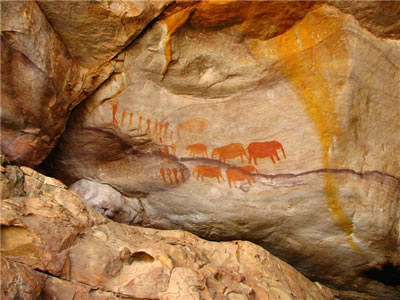 Some anthropologists say that the paintings were made by shamans while they were in religious trances. Others say that caves were painted to ensure that hunting was successful. Another theory is that cave paintings simply represent the fantasies of adolescent males who dreamed of dominating and killing large, powerful beasts.
Some anthropologists say that the paintings were made by shamans while they were in religious trances. Others say that caves were painted to ensure that hunting was successful. Another theory is that cave paintings simply represent the fantasies of adolescent males who dreamed of dominating and killing large, powerful beasts.
Many cave paintings were made in areas in caves where sound is amplified. Musical instruments, such as flutes, have been found in caves that have been painted. Therefore, cave paintings could have been designed for use in ceremonies in which music also played an important role.
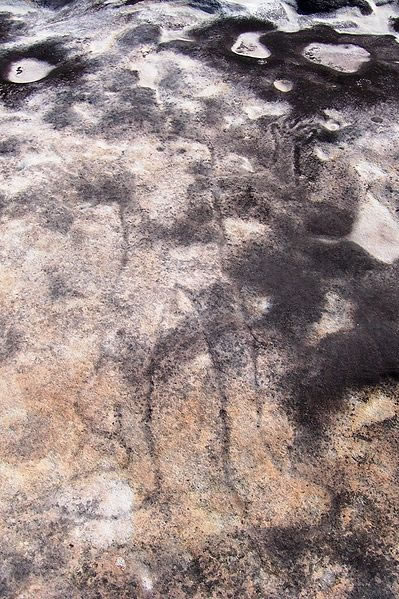 Petroglyphs
Petroglyphs
Human beings began making petroglyphs, or rock carvings, towards the very end of the Upper Paleolithic period.
Petroglyphs have been discovered in Africa, Asia, Australia, Europe and North and South America.
They are thought to have been used for communication, and therefore, to have been precursors of writing systems.
Statues
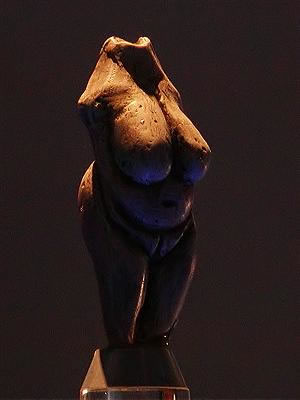 Many statues known as Venus figurines were created during the Upper Paleolithic period. Venus figurines are statues of fat women with enormous breasts, abdomens, hips, thighs and vulvas. They usually do not have faces. They range from between about 1 and a half inches to about 10 inches tall.
Many statues known as Venus figurines were created during the Upper Paleolithic period. Venus figurines are statues of fat women with enormous breasts, abdomens, hips, thighs and vulvas. They usually do not have faces. They range from between about 1 and a half inches to about 10 inches tall.
The Venus of Willendorf is a famous Venus figurine that was carved about 23,000 years ago. It is about 4 and a half inches tall, made of limestone and painted with red ochre. It was discovered near the village of Willendorf, in Austria.
The Venus of Hohle Fels, which is also called the Venus of Schelkinglen, was found near Schelklingen, Germany in 2008. It is around 35,000 to 40,000 years old, one of the oldest known works of figurative, or representational art.
Some anthropologists think that Venus figurines were representations of a fertility goddess. Others say that they were a form of pornography
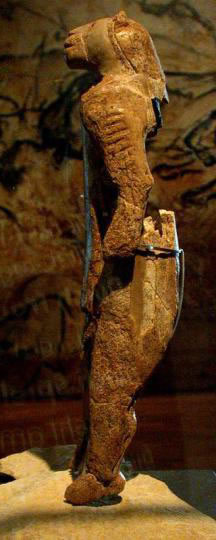 Statues of animals, such as lions, bears and animals and of hybrid human-animal figures were also created during the Upper Paleolithic period. The Lion Man, which was found in Stadel cave in Hohlenstein Mountain in Germany, is a statue of a creature that has a human-like body and a lion's head. It is about 32,000 years old, and is the oldest known animal-shaped sculpture on Earth.
Statues of animals, such as lions, bears and animals and of hybrid human-animal figures were also created during the Upper Paleolithic period. The Lion Man, which was found in Stadel cave in Hohlenstein Mountain in Germany, is a statue of a creature that has a human-like body and a lion's head. It is about 32,000 years old, and is the oldest known animal-shaped sculpture on Earth.